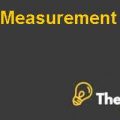Case Synopsis
Ocean Cove case is based upon the analysis of the restaurant chain in Indian comprising of five restaurants owned by Rakesh Gupta and Satish Kapoor. The restaurant had been founded by these two owners in the year 1998 and the company had formulated a vision of consistent growth as growth was the imperative part of the vision of the company and as a result of that, the management and the owners of the company had planned to increase the size of all the five existing restaurants of the company from their 120 seats service level to 160 seats.
The company has already planned the aggressive growth of the company for the year 2002 and it was considering three options of which most of the attention was being paid to the option of increasing the size of the restaurant. The other two options comprised of opening three other restaurants and the option of diversification in other kinds of fast food such as the Spanish tapas and Italian. The case depicts the entire operations of the restaurants, the average time spent on each of the phases of kitchen activities and the average time spent by each of the customers of the company visiting the restaurant.
This case requires the use of the quantitative models and methods to determine that whether increasing the size of the restaurant would also require increasing the capacity or changing the operating processes of the individual restaurants. Little’s law could be observed in the operations of the restaurant and based upon the intuition and quantitative analysis, changes in demand and the processes need to be determined.
Analysis
The analysis of the internal operations of the restaurant has been performed on the basis of the Little’s Law. The principle of Little’s Law has been used in order to determine the increase in the capacity and the changes in the operations as well as the demand of the restaurants.
Number of items in process
First of all, the total cycle time of each order at an individual restaurant and the average completion rate per hour has been used in order to compute an average number of items in the process which could be referred to as the average inventory per order. This has been calculated on the basis of the total cycle time formula as follows:
| Total Cycle Time | Number of items in Process/Average Completion rate per hour |
| Total Cycle Time |
18.5 |
| Average Completion rate per hour |
1.06 |
| Number of items in process |
20 |
The average number of items in the process or the average number of items per order is equal to 20 items. When the capacity of the restaurant or the size is increased from 120 to 160 seats, the inventory level would surely have to be increased by the management of the company as the demand would raise leading to increased sales.
New Order Processing time and Customer time
Once the number of the customers is increased as the size of the restaurant is increased, the total process time is assumed to increase based upon the current capacity of the restaurant. The average time spent by the customer is also assumed to increase as a result of the increase in the size, more people and better ambiance. Another reason for the increase in the customer time could be the delay in the serving time currently required for appetizers, main course and desserts at the restaurants.The increase in the cycle time and the increase in the customer time calculations are shown in the table below:
|
SEATS EXPANSION |
|
| Total Process Time |
18.5 |
| Total Customer Time |
48 |
| Current Number of Seats |
120 |
| New number of Seats |
160 |
| New average lunch time spent |
60 |
| New average dinner time spent |
110 |
| New Total Process time |
25 |
| New total Customer time |
64 |
The above table shows that once the size of the restaurant is increased by 40 seats, then the total cycle time and the customer time is likely to increase to 25 minutes and 64 minutes respectively.
Little’s Law based on 160 Seats
Lastly, the quantitative analysis of the impact of the increase in the size of the restaurants by increasing the current 120 seats to 160 seats has been analyzed on the inventory, cooks, waiters, support staff and the layout of the kitchen. Little’s Law states that the average long term number of the customers in a given system is equal to the product of the average time a customer spends in a system (W) and the long term average effective arrival rate ( ). This is mathematically given as:....................
This is just a sample partial case solution. Please place the order on the website to order your own originally done case solution.














